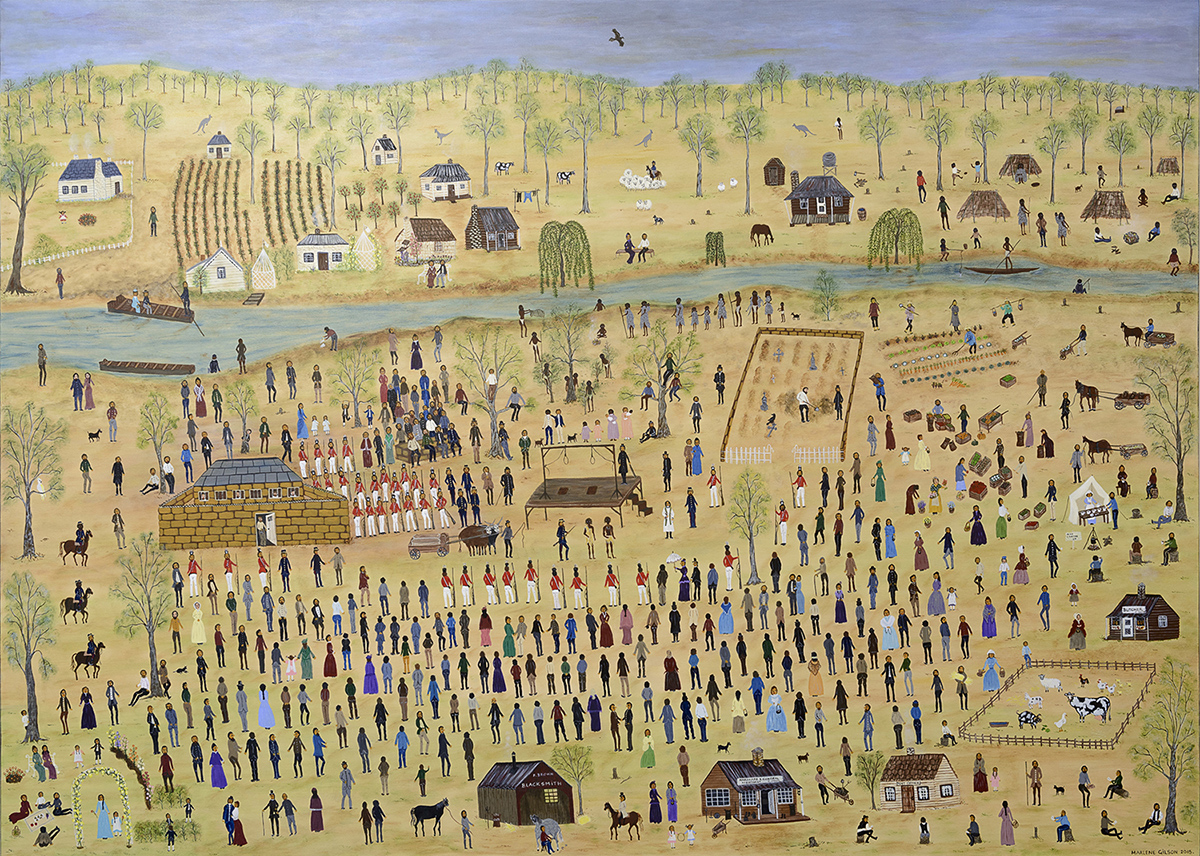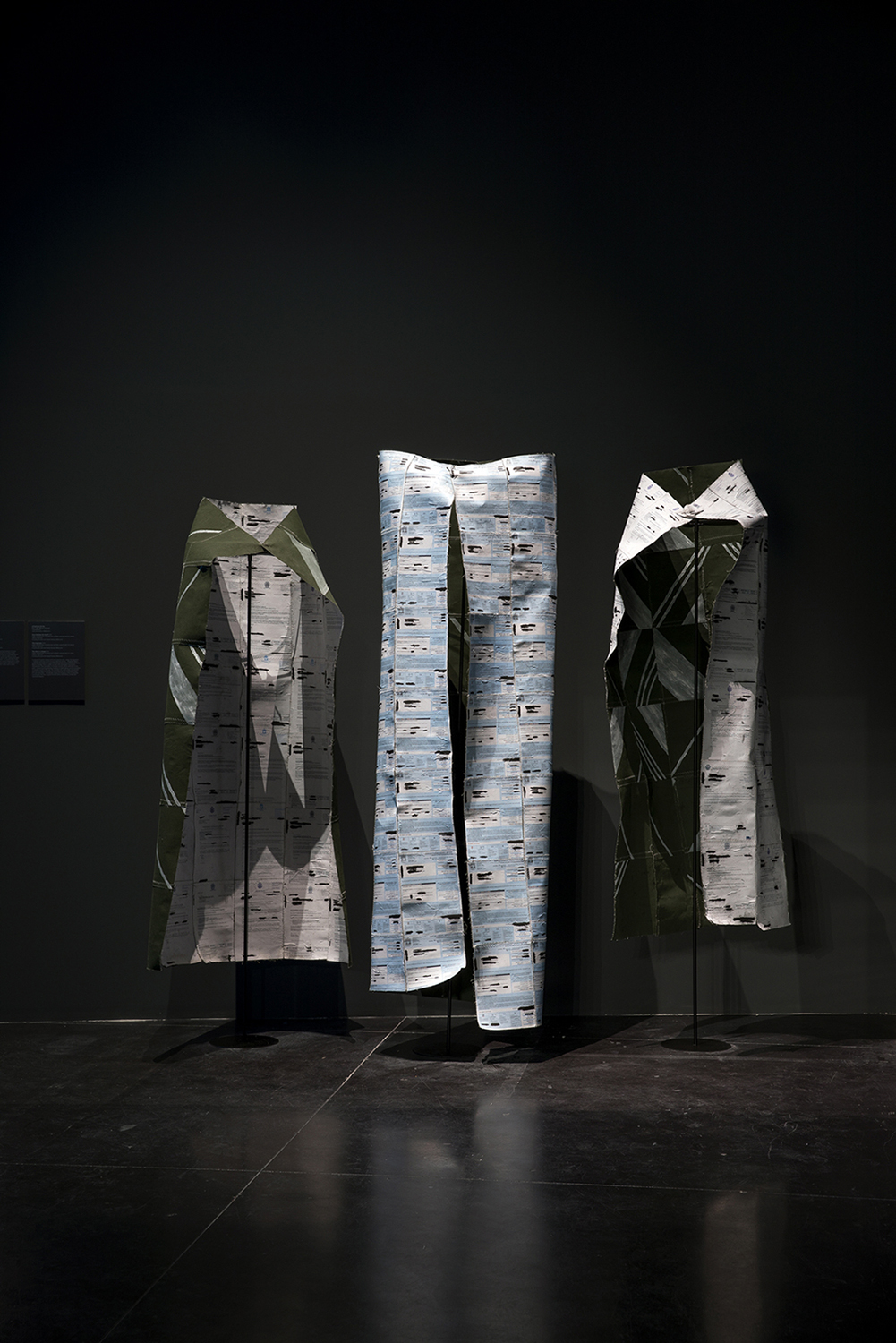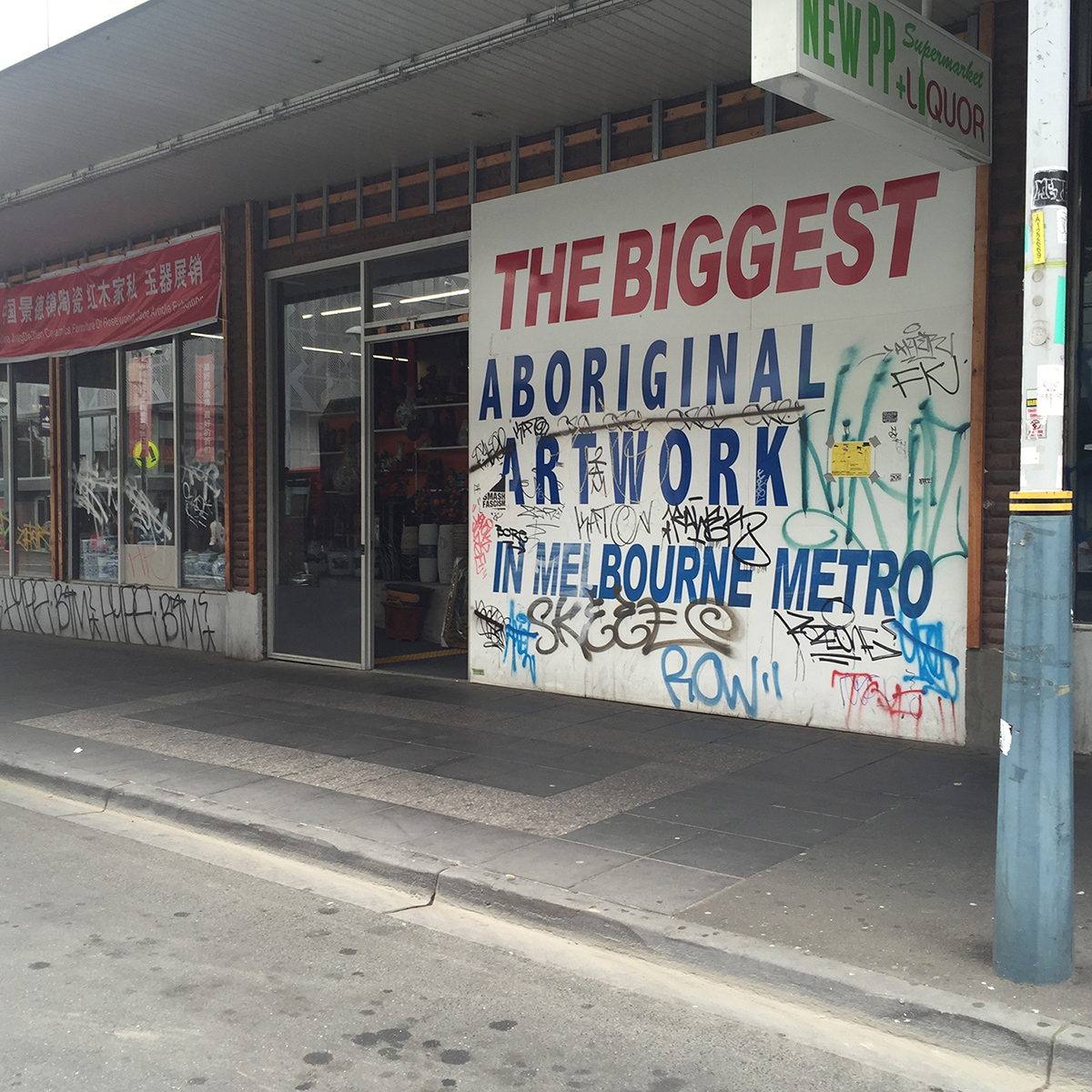Shows
Nations Striving for “Sovereignty”


Since 1788, Australia’s indigenous populations have been subjected to mass traumas due to the explicit and insidious incursions of settler colonies. These traumas remain unhealed, though the current sociopolitical climate not only fosters advocacy by both indigenous and non-indigenous peoples to acknowledge the violent settlement of Australia, but also advances the First Nations’s goal of self-determination. Currently, political debates rage as matters of constitutional recognition of indigenous peoples and the subsequent brokering of treaties remain unresolved. Melbourne, in fact, resides in the first Australian state to negotiate the first of hopefully many such treaties.
The presentation of “Sovereignty,” then, was a bold and overdue move for an art gallery that, for years, has ignored the history of Kulin nation land on which it stood. The Australian Centre for Contemporary Art’s (ACCA) new artistic director Max Delany teamed up with Wemba-Wemba and Gunditjmara artist, curator and researcher Paola Balla, to co-curate an exhibition that gives voice to Southeast Australia’s indigenous artists, activists and thinkers.


“Sovereignty” begins with William Barak’s Untitled (Ceremony) (c. 1880–90s), mixed-media painting that depicts figures dressed in possum-skin cloaks in a dance ceremony (or corroboree). Barak is a key figure in that he set prime examples for future indigenous activists. He had witnessed the infamous signing of John Batman’s “treaty”—the supposed trade deal that was struck between Batman and Wurundjeri elders whereby indigenous peoples were to give over their land. The document is now widely perceived as illegitimate. He later went on to become an artist and land rights activist, marching to Melbourne’s Parliament House in the late 1800s to demand rights for his people. The exhibition traces these forgotten histories in a series of remembrances by First Nations artists. Opposite Barak’s work hang two paintings by Marlene Gilson, one depicting Batman’s so-called treaty, the other showing the first public hanging in the city—of two Aboriginal Tasmanians, Tunnerminnerwait and Maulboyheenner.
Steaphan Paton’s three cloaks are wryly made by stitching traffic infringement notices together on the outer side of two of the garments, their linings pieced together with designs of the Gunai and Monero nations, which form the artist’s own heritage; a third cloak is shown in reverse. The work drives home the hypocrisy of the sheriffs, magistrates and officers who issue the fines, as well as the resilience found in the artist’s culture. Moving forward in the exhibition, it was refreshing to see both music and documentary-style videos in the gallery. Indigenous Australian rapper Briggs music videos for the songs Sheplife (2012) and Bad Apples (2014) spit attitude and sensitivity, his rap verses bleeding into nearby spaces of the gallery. Filmmaker Amiel Courtin-Wilson collaborated with indigenous performer and elder Jack Charles to produce a video on Charles’ life, from his time in prison—where he taught fellow inmates how to throw pottery—to his life as an actor. It was a deeply moving film and made clear Charles’ tenacity in the face of lifelong adversity. In one scene, the actor reflects on his time in prison and intimates that freedom is in one’s mind—his body may be shackled, but his mind will never be confined.
Also screened was Bruce McGuinness’ 1972 documentary-style video, Black Fire (1972), which chronicled the black rights movement in Australia while critiquing the film medium’s ethnographic treatment of its subjects. McGuinness is the nephew of legendary indigenous rights activist and filmmaker Bill Onus, whose Home Movie Collection (c. 1964) was also screened in the ACCA’s opening room. Elsewhere, Steven Rhall’s billboard-sized The Biggest Aboriginal Artwork in Melbourne Metro (2014–16) was humorous in its delivery, but serious in intent. The artwork was originally installed in empty public space by Rhall as an intervention, but was transplanted into the gallery for “Sovereignty.” The most intriguing element is a mirror on its back, which by virtue situates the viewer within the artwork.
Women artists were present throughout the show, but one room of the ACCA, painted red, paid homage to their contributions to indigenous culture. Three chilling sculptural works by Yhonnie Scarce, each consisting of sandblasted glass, acrylic and found hospital cribs, comment on the nuclear fallout around Maralinga, an infamous nuclear test site. In another room, Vicki Couzens’ digital print Honour Roll (2010) and digital image George Whatmore Killed by Blacks (2010) again expose the hypocrisy of the representation of Australian history, while the work also pays tribute to members of the First Nations who have been murdered or massacred. Megan Cope’s sculpture Resistance (2013) encapsulates protest signs reading “parochial vision,” “stop the boats” and other slogans, referencing parallels between the indigenous experience of Anglo-immigration and the lewd attitudes of some Australian administrations toward migrants.


It was most pertinent, when reaching the end of the show, that one of the protest banners produced by the Warriors of the Aboriginal Resistance (WAR), an activist group focused on decolonization and Aboriginal nationalism, was temporarily removed to serve its original purpose—as an instrument of dissent during protest marches on Invasion Day (otherwise known as Australia Day, the country’s national day). The exhibition itself showed the living and lived activisms of Victoria state’s First Nations peoples in a way that was understanding and cogent in the presentation of the artworks’ roles in activities beyond the gallery. The curators accomplished this through consultation with the indigenous community, and the result of that undertaking was a poetic—at times explicit—expression of the community’s many activisms.
Altogether, the exhibition retained a sense of resistance and remembrance. What set it apart was a willingness to engage across generations, within a tight geography while retaining respect for the makers. The show reflected the complexity of First Nations identities in Southeast Australia’s settler-colonial context, allowing disparate voices to come together in a chorus. As Paolo Balla wrote in the exhibition catalogue, “Whilst we pay homage to our ancestors—and to thousands of years of life, knowledge, and creativity on our collective Countries—we are present and future-focused peoples.” “Sovereignty,” then, is a call to the present and to the future, and a powerful call at that.

“Sovereignty” is on view at the Australian Centre for Contemporary Art, Melbourne, until March 26, 2017.







